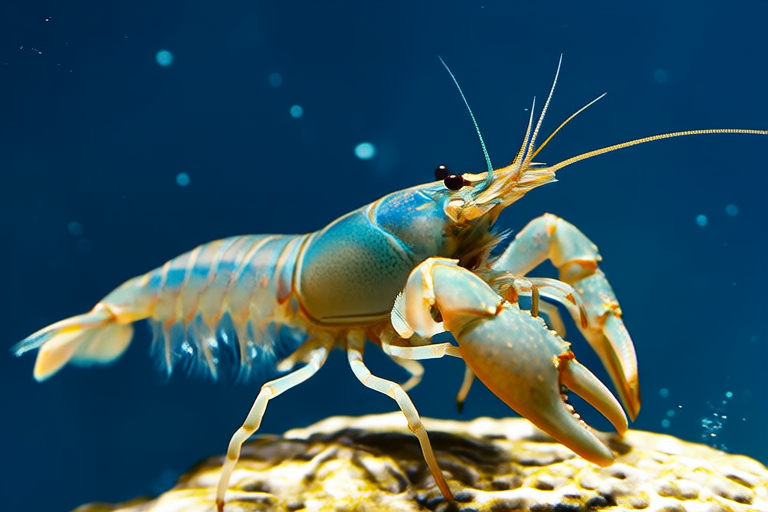From Ocean to Tank: The Ultimate Care Sheet for Coral Shrimp Owners
Introduction
Welcome to your comprehensive guide to caring for coral shrimp. These fascinating creatures add a touch of color and life to any marine aquarium. This guide will walk you through everything from setting up their ideal habitat to keeping them healthy and thriving.
Optimal Tank Setup
Tank Size and Compatibility
Coral shrimp, like Periclimenes venustus, are generally peaceful and can coexist with other non-aggressive species. A tank size of at least 30 gallons is recommended to provide ample space for swimming and exploration. Ensure compatibility with other tank inhabitants by choosing species that have similar environmental needs and temperaments.
Habitat Decorations
Recreate their natural environment by adding live rock and corals. These not only provide hiding spots but also contribute to the biological filtration of the tank. Avoid sharp or abrasive decorations that could harm the shrimp’s delicate exoskeleton.
Lighting
Proper lighting is crucial for both the shrimp and the corals. Use a full-spectrum LED light system that mimics natural sunlight. Ensure a photoperiod of about 8-10 hours per day to maintain a healthy circadian rhythm for your shrimp.
Water Parameters
Temperature
Maintain a stable temperature between 75°F and 80°F (24°C to 27°C). Use an aquarium heater and thermometer to monitor and adjust as necessary.
pH Levels
The pH should be kept between 8.1 and 8.4. Regular testing and adjustments with appropriate buffers are key to maintaining this range.
Salinity
Aim for a specific gravity of 1.023 to 1.025. Use a hydrometer to check salinity levels and make necessary adjustments with freshwater or saltwater.
Ammonia, Nitrite, and Nitrate Levels
Keep ammonia and nitrite levels at 0 ppm and nitrate below 20 ppm. Establishing a robust nitrogen cycle through proper cycling of the tank before introducing shrimp is essential.
Feeding Habits
Dietary Needs
Coral shrimp are omnivores, feeding on algae, detritus, and small particles of meaty foods. In captivity, they thrive on a varied diet including flake food, pellets, and occasional treats like frozen brine shrimp or mysis shrimp.
Feeding Schedule
Feed your shrimp twice daily, offering small portions to prevent overfeeding and water quality issues. Monitor their behavior to ensure they are getting enough food without causing waste buildup.
Common Diseases
Bacterial Infections
Symptoms include cloudy eyes, lethargy, and loss of appetite. Treat with antibiotics prescribed by a veterinarian specializing in aquatic animals.
Fungal Infections
Look for white patches on the body. Fungicides are available but consult a professional before treatment.
Parasitic Infestations
Identified by excessive grooming, weight loss, and rapid breathing. Treatment may involve medicated foods or dips under veterinary supervision.
Tips for Maintaining a Healthy Environment
Regular Maintenance
Perform weekly water changes of about 10-15% to keep the tank clean and water parameters stable. Clean filters and decorations as needed to prevent the buildup of harmful substances.
Monitoring Behavior
Observe your shrimp regularly for signs of stress or illness. Early detection can lead to quicker resolution of health issues.
Stress Reduction
Avoid sudden changes in water parameters and handle shrimp gently during maintenance. Provide plenty of hiding places to reduce stress and promote natural behaviors.
Conclusion
Caring for coral shrimp requires attention to detail and commitment to maintaining a healthy environment. By following this guide, you’ll be well-equipped to provide the best possible home for these beautiful creatures. Remember, every aquarium is unique, so adapt these guidelines as needed based on the specific conditions of your tank and the needs of your shrimp.
